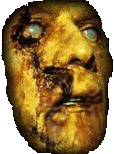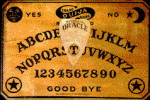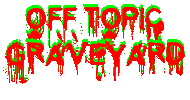WELCOME TO THE DARKSIDE ! EST.08/30/06
We like to post anything that's spooky, haunted, abandoned or fun.
Tuesday, April 29, 2008
STANLEY KUBRICK 1928 -1999
Tribute to one of the greatest filmmaker of all time.
JOHN CARPENTER
John Carpenter: Fear Is Just the Beginning... The Man and His Movies
Filmmaker John Carpenter helped redefine the American horror film in 1978 with Halloween, a low-budget thriller which became a major box office success. Since then, Carpenter has devoted his career to bringing a fresh perspective to genre filmmaking, striving to maintain the freedom of an independent while working within the studio system. (Carpenter not only writes and directs his own projects, but often also serves as producer and composer as well.) John Carpenter: Fear Is Just the Beginning...The Man and His Movies is a documentary about this two-fisted maverick auteur, which offers a look at the making of such favorites as Escape From New York, The Thing, The Fog, and many more. The documentary includes interviews with Jamie Lee Curtis, Kurt Russell, Adrienne Barbeau, Debra Hill, and other friends and colleagues
TRIVIA
In the movie Change of Habit (1969) Elvis Presley plays a character named John Carpenter. In 1979 Carpenter directed the TV movie Elvis starring his good friend Kurt Russell.
Is a fan of the Quartermass movies (The Quatermass Xperiment (1955), Quatermass and the Pit (1967)), wrote Prince of Darkness (1987) under the pseudonym of Martin Quatermass, and the village in In the Mouth of Madness (1995) is named after a rail station in "Quatermass and the Pit".
Appears in his own films under the name Rip Haight, appearing in in The Fog (1980), Starman (1984), Body Bags (1993) (TV), and Village of the Damned (1995).
Considers it bad luck to wear the hat of the show he's working on. Will not wear a crew cap until the film is over.
Loves Elvis Presley and old Cadillacs.
Is a major NBA fan and has a satellite dish installed on his location trailer to keep up with the games. Always has a portable basketball hoop on location.
Favorite meal of the day is breakfast - any time of day.
He has a son named Cody with Adrienne Barbeau.
Is a great fan of Sergio Leone and cast Lee Van Cleef in Escape from New York (1981) because of his work with Leone.
Carpenter's character Snake Plissken (of Escape from New York (1981) and Escape from L.A. (1996)) is about to become a comic book. Published by theCrossGen imprint Code 6 Comics, the book will be known as "John Carpenter's The Snake Plissken Chronicles". It is set for publication beginning in 2003.
With the exception of Escape from L.A. (1996), he has rarely made a sequel to any of his films.
Praised longtime friend and frequent collaborator Kurt Russell for being a hard-working, professional actor who isn't afraid to take on roles that might hurt his image or make him look like a fool.
Is a big fan of Howard Hawks.
He is a big fan of The Beach Boys.
Was originally supposed to direct Firestarter (1984), and even had a screenplay written by Bill Lancaster. Both were replaced when The Thing (1982), a film on which they both collaborated, did poorly at the box office.
Said in a 1982 interview that he thought the R rating for Halloween (1978) was justifiable, but The Fog (1980) should've been rated PG.
Was given the chance to direct The Mutant Chronicles (2008).
Was offered a chance to direct the Eddie Murphy film The Golden Child (1986), but turned it down.
Turned down the chance to direct Top Gun (1986).
Turned down the chance to direct Fatal Attraction (1987).
Was offered the chance to direct "Armed and Dangerous" (1986) but turned it down. Job went to Mark L. Lester who also directed "Firestarter" (1984) which was offered to Carpenter.
Is an avid fan of the Godzilla films. He considers the first Godzilla movie (Gojira) to be an inspiration for him.
Filmmaker John Carpenter helped redefine the American horror film in 1978 with Halloween, a low-budget thriller which became a major box office success. Since then, Carpenter has devoted his career to bringing a fresh perspective to genre filmmaking, striving to maintain the freedom of an independent while working within the studio system. (Carpenter not only writes and directs his own projects, but often also serves as producer and composer as well.) John Carpenter: Fear Is Just the Beginning...The Man and His Movies is a documentary about this two-fisted maverick auteur, which offers a look at the making of such favorites as Escape From New York, The Thing, The Fog, and many more. The documentary includes interviews with Jamie Lee Curtis, Kurt Russell, Adrienne Barbeau, Debra Hill, and other friends and colleagues
TRIVIA
In the movie Change of Habit (1969) Elvis Presley plays a character named John Carpenter. In 1979 Carpenter directed the TV movie Elvis starring his good friend Kurt Russell.
Is a fan of the Quartermass movies (The Quatermass Xperiment (1955), Quatermass and the Pit (1967)), wrote Prince of Darkness (1987) under the pseudonym of Martin Quatermass, and the village in In the Mouth of Madness (1995) is named after a rail station in "Quatermass and the Pit".
Appears in his own films under the name Rip Haight, appearing in in The Fog (1980), Starman (1984), Body Bags (1993) (TV), and Village of the Damned (1995).
Considers it bad luck to wear the hat of the show he's working on. Will not wear a crew cap until the film is over.
Loves Elvis Presley and old Cadillacs.
Is a major NBA fan and has a satellite dish installed on his location trailer to keep up with the games. Always has a portable basketball hoop on location.
Favorite meal of the day is breakfast - any time of day.
He has a son named Cody with Adrienne Barbeau.
Is a great fan of Sergio Leone and cast Lee Van Cleef in Escape from New York (1981) because of his work with Leone.
Carpenter's character Snake Plissken (of Escape from New York (1981) and Escape from L.A. (1996)) is about to become a comic book. Published by theCrossGen imprint Code 6 Comics, the book will be known as "John Carpenter's The Snake Plissken Chronicles". It is set for publication beginning in 2003.
With the exception of Escape from L.A. (1996), he has rarely made a sequel to any of his films.
Praised longtime friend and frequent collaborator Kurt Russell for being a hard-working, professional actor who isn't afraid to take on roles that might hurt his image or make him look like a fool.
Is a big fan of Howard Hawks.
He is a big fan of The Beach Boys.
Was originally supposed to direct Firestarter (1984), and even had a screenplay written by Bill Lancaster. Both were replaced when The Thing (1982), a film on which they both collaborated, did poorly at the box office.
Said in a 1982 interview that he thought the R rating for Halloween (1978) was justifiable, but The Fog (1980) should've been rated PG.
Was given the chance to direct The Mutant Chronicles (2008).
Was offered a chance to direct the Eddie Murphy film The Golden Child (1986), but turned it down.
Turned down the chance to direct Top Gun (1986).
Turned down the chance to direct Fatal Attraction (1987).
Was offered the chance to direct "Armed and Dangerous" (1986) but turned it down. Job went to Mark L. Lester who also directed "Firestarter" (1984) which was offered to Carpenter.
Is an avid fan of the Godzilla films. He considers the first Godzilla movie (Gojira) to be an inspiration for him.
NOSFERATU: A SYMPHONY OF HORROR
This is the remastered version with newer music.
An unauthorized production of Bram Stoker's work (The legal heirs didn't give their permission), so the names had to be changed. But this wasn't enough: The widow of Bram Stoker won two lawsuits (1924 and 1929) in which she demanded the destruction of all copies of the movie, however happily copies of it were already too widespread to destroy them all. Later, the Universal studios could break her resistance against this movie. Count Orlok's move to Wisburg (Obviously the real "Wismar") brings the plague traceable to his dealings with the Realtor Thomas Hutter, and the Count's obsession with Hutter's wife, Ellen the only one with the power to end the evil.
TRIVIA
The character Orlok is never seen blinking on screen.
Max Schreck is seen on screen, even before his character Graf Orlok is presented to the audience. He appears briefly opposite Hutter at the desk at the office of Knock, looking up from writing when Knock calls on Hutter to give him the assignment of going to see the count.
Filmed between August and October 1921.
Many scenes featuring Graf Orlok were filmed during the day, and when viewed in black and white, this becomes extremely obvious. This potential blooper is corrected when the "official" versions of the movie are tinted blue to represent night.
Ruth Landshoff, the actress who played the hero's sister once described a scene in which she fled the vampire, running along a beach. That scene is not in any version of the film.
The character of Nosferatu is only seen on screen for a bit less than nine minutes in total throughout the whole film.
All known prints and negatives were destroyed under the terms of settlement of a lawsuit by Bram Stoker's widow. However, the film would subsequently surface in other countries.
The only complete, original copy is said to be owned by the German Max Schreck collector Jens Geutebrück.
Director F.W. Murnau found Max Schreck "strikingly ugly" in real life and decided the vampire makeup would suffice with just pointy ears and false teeth.
The creature that they say is a werewolf, during the scene at the Inn, is actually a Hyena.
Gustav von Wangenheim was not director F.W. Murnau's first or even his second choice, but his third one.
The movie was banned in Sweden due to excessive horror. The ban was finally lifted in 1972
Still, after 85 years, virtually all of the exteriors are left intact in the cities of Wismar and Lubeck.
There have been different first names for the main characters in different English versions. In a few, Hutter is called "Thomas", in others is "Jonathon". Although Hutter's wife is credited as "Ellen", in some versions she is called "Nina".
FROM SHOCK TO SVENGOOLIE
From Shock Theatre to Svengoolie - Cinematic Obsessions
Frank Avila interviews Ted Okuda And Mark Yurkiw, authors of the book "Chicago TV Horror Movie Shows From Shock Theatre to Svengoolie" Although the motion picture industry initially disparaged and feared television, by the late 1950s, studios saw the medium as a convenient dumping ground for thousands of films that had long been gathering dust in their vaults. As these films found their way to local TV stations, enterprising distributors grouped the titles by genre so programmers could showcase them accordingly. It was in this spirit that Chicago’s tradition of horror TV movie shows was born. TV viewers couldn’t get enough of the old monster movies—everything from glossy Frankenstein and Dracula epics to low-budget cheapies featuring giant grasshoppers and teenage werewolves. Here in Chicago, these films were broadcast on such horror movie shows as Shock Theatre, Thrillerama, Creature Features, and Screaming Yellow Theater. Chicago TV Horror Movie Shows: From Shock Theatre to Svengoolie is the first comprehensive look at Chicago’s horror movie programs, from their inception in 1957 to the present. Through career profiles of the Horror Hosts who provided comedic interludes between commercial breaks, discover which creepy presenter was one of the 12 reporters to travel around the country with the Beatles during their 1965–66 U.S. tour, and learn about the politics behind Channel 32’s sudden (and outrageous) switch from Svengoolie to the Ghoul. Also included are broadcast histories of such “hostless” programs as Creature Features, Thrillerama, The Big Show, The Early Show, The Science Fiction Theater, and Monster Rally, along with a guide to 100 fright films broadcast on Chicago television and a look at the “Shock!” horror library that started a TV craze. Filled with rare photographs and never-before-published data, Chicago TV Horror Movie Shows celebrates a grand tradition in local television. Lake Claremont Press fosters and celebrates what's distinctive about Chicago's history, culture, geography, spirit, and lore. Join us in preserving the past, exploring the present, and ensuring a future sense of place for our corner of the globe.
Frank Avila interviews Ted Okuda And Mark Yurkiw, authors of the book "Chicago TV Horror Movie Shows From Shock Theatre to Svengoolie" Although the motion picture industry initially disparaged and feared television, by the late 1950s, studios saw the medium as a convenient dumping ground for thousands of films that had long been gathering dust in their vaults. As these films found their way to local TV stations, enterprising distributors grouped the titles by genre so programmers could showcase them accordingly. It was in this spirit that Chicago’s tradition of horror TV movie shows was born. TV viewers couldn’t get enough of the old monster movies—everything from glossy Frankenstein and Dracula epics to low-budget cheapies featuring giant grasshoppers and teenage werewolves. Here in Chicago, these films were broadcast on such horror movie shows as Shock Theatre, Thrillerama, Creature Features, and Screaming Yellow Theater. Chicago TV Horror Movie Shows: From Shock Theatre to Svengoolie is the first comprehensive look at Chicago’s horror movie programs, from their inception in 1957 to the present. Through career profiles of the Horror Hosts who provided comedic interludes between commercial breaks, discover which creepy presenter was one of the 12 reporters to travel around the country with the Beatles during their 1965–66 U.S. tour, and learn about the politics behind Channel 32’s sudden (and outrageous) switch from Svengoolie to the Ghoul. Also included are broadcast histories of such “hostless” programs as Creature Features, Thrillerama, The Big Show, The Early Show, The Science Fiction Theater, and Monster Rally, along with a guide to 100 fright films broadcast on Chicago television and a look at the “Shock!” horror library that started a TV craze. Filled with rare photographs and never-before-published data, Chicago TV Horror Movie Shows celebrates a grand tradition in local television. Lake Claremont Press fosters and celebrates what's distinctive about Chicago's history, culture, geography, spirit, and lore. Join us in preserving the past, exploring the present, and ensuring a future sense of place for our corner of the globe.
Monday, April 14, 2008
MAKE SCARY PHOTOS
How To Make Scary Photos Like Those In The Films Using Photoshop
How To Make Scary Photos Like Those In The Films - The funniest home videos are here
How To Make Scary Photos Like Those In The Films - The funniest home videos are here
Sunday, April 13, 2008
THEY LIVE!
Nada, a down-on-his-luck construction worker, discovers a pair of special sunglasses. Wearing them, he is able to see the world as it really is: people being bombarded by media and government with messages like "Stay Asleep", "No Imagination", "Submit to Authority". Even scarier is that he is able to see that some usually normal-looking people are in fact ugly aliens in charge of the massive campaign to keep humans subdued.
TRIVIA
The line "I have come here to chew bubble gum and kick ass, and I'm all out of bubble gum" was ad-libbed by Roddy Piper. According to director John Carpenter, Piper had taken the line from a list of ideas he had for his pro wrestling interviews.
The credited writer "Frank Armitage" is a reference to a character in Lovecraft's "The Dunwich Horror." Director John Carpenter stated in an interview he agreed with many of Lovecraft's world views, which helped shape the film's direction.
Writer "Frank Armitage" is actually director John Carpenter.
The fight between Nada (Roddy Piper) and Frank (Keith David) was only supposed to last 20 seconds, but Piper and David decided to fight it out for real, only faking the hits to the face and groin. They rehearsed the fight for three weeks. Carpenter was so impressed he kept the 5 minute and 20 second scene intact.
The communicators that the guards use are the P.K.E. meters from Ghost Busters (1984).
Roddy Piper's character never gives his name nor is he referred to by name throughout the entire movie. He is simply referred to as "Nada" in the credits, which means "nothing" in Spanish.
There is a thinly veiled jab at "Siskel & Ebert & the Movies" (1986), with both Gene Siskel and Roger Ebert as aliens. "Siskel" is denouncing George A. Romero and John Carpenter as too violent. (In fact, Siskel had written a scathing review of Romero's Night of the Living Dead (1968).)
The only character given a first and last name is Holly Thompson (Meg Foster).
John Carpenter wanted a truly rugged individual to play Nada. He cast wrestler Roddy Piper in lead role after seeing him at _Wrestlemania III (1987) (V)_ . Carpenter remembered Keith David's performance in The Thing (1982) and wrote the role of Frank specifically for the actor.
The main character is listed in the credits as being named "Nada." This is most likely a reference to George Nada, the main character of Ray Nelson's short story "Eight O'Clock in the Morning," which was the basis for ‘They Live’.
More info from IMDB
TRIVIA
The line "I have come here to chew bubble gum and kick ass, and I'm all out of bubble gum" was ad-libbed by Roddy Piper. According to director John Carpenter, Piper had taken the line from a list of ideas he had for his pro wrestling interviews.
The credited writer "Frank Armitage" is a reference to a character in Lovecraft's "The Dunwich Horror." Director John Carpenter stated in an interview he agreed with many of Lovecraft's world views, which helped shape the film's direction.
Writer "Frank Armitage" is actually director John Carpenter.
The fight between Nada (Roddy Piper) and Frank (Keith David) was only supposed to last 20 seconds, but Piper and David decided to fight it out for real, only faking the hits to the face and groin. They rehearsed the fight for three weeks. Carpenter was so impressed he kept the 5 minute and 20 second scene intact.
The communicators that the guards use are the P.K.E. meters from Ghost Busters (1984).
Roddy Piper's character never gives his name nor is he referred to by name throughout the entire movie. He is simply referred to as "Nada" in the credits, which means "nothing" in Spanish.
There is a thinly veiled jab at "Siskel & Ebert & the Movies" (1986), with both Gene Siskel and Roger Ebert as aliens. "Siskel" is denouncing George A. Romero and John Carpenter as too violent. (In fact, Siskel had written a scathing review of Romero's Night of the Living Dead (1968).)
The only character given a first and last name is Holly Thompson (Meg Foster).
John Carpenter wanted a truly rugged individual to play Nada. He cast wrestler Roddy Piper in lead role after seeing him at _Wrestlemania III (1987) (V)_ . Carpenter remembered Keith David's performance in The Thing (1982) and wrote the role of Frank specifically for the actor.
The main character is listed in the credits as being named "Nada." This is most likely a reference to George Nada, the main character of Ray Nelson's short story "Eight O'Clock in the Morning," which was the basis for ‘They Live’.
More info from IMDB
THE CABINET OF Dr CALIGARI "With Soundtrack"
Considered by many to be the first horror film ever made, the 1920 German Expressionist murder mystery film gets a refreshed score by the California group, The Rhoda Penmarks
CHERNOBYL

A video made from the inside of the so called "sarcophagus". Bad quality and no sound ... but pretty scarring to be inside a extremely toxic environment. Nuclear power is something that we cannot play with... if you turn your back to it, it kills you silently and painfully
a video clip of inside the exploded reactor
a recent video from Prypiat, the closest city to the atomic reactor
Great video of Family life in Chernobyl before and after the nuclear accident.
Subscribe to:
Posts (Atom)

Custom Search
















